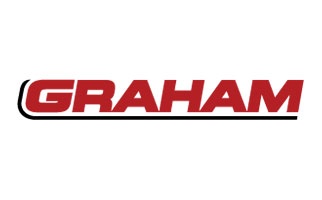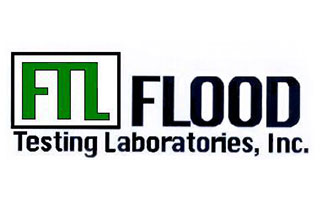Why Contractors Are Switching to SmartRock™
Flood Testing Labs Inc. switched to SmartRock to:
Make critical decisions regarding concrete temperature in real-time
Easily share data with team members on and off the jobsite
Get more accurate and reliable strength data Increase safety on the jobsite
“You couldn’t do the construction schedules that we have now without [SmartRock].” - Walter H. Flood, Principal Engineer at Flood Testing Labs
Request Pricing Now!
Different Types of Concrete Temperature Sensors and Maturity Meters
Whether you are looking to find a concrete sensor that meets the requirements of your thermal control plan or helps you in measuring the concrete maturity and strength on the jobsite, you need to consider cost, accuracy, ease of use, and of course the ROI in your project.
a. Thermocouples
This is a very basic solution for monitoring concrete temperature. Two metal wires are twisted together in one end that goes into concrete. The other end has to stay connected to an external device that records temperature. Thermocouple wires are relatively inexpensive (about $1/ft). But, with a standard error limit of about 4°F (2.2°C), they lack the accuracy needed in most concrete monitoring applications. Moreover, the thermocouple wires are not rugged enough for harsh construction environments.

b. Wired Temperature and Maturity Loggers
These types of temperature loggers have a self-contained circuit board that can be embedded in the concrete. The logger is wired out of concrete and data can be retrieved at any time using a hand-held device. Simple analysis is typically possible on the hand-held units. But, for full processing, the data needs to be transferred to a computer. The wire for these loggers is typically more rugged than that in thermocouples. But, they are still prone to cuts on the jobsite. Data collection is also labor-intensive.

c. Wired Sensors with External Wireless Transmitter
Whether using thermocouples or loggers, in some commercial systems, the end of the wires that comes out of concrete can be connected to a wireless node that sends the temperature data either directly to cloud or to a local hub that then transmits data to the cloud. The remote monitoring capability of concrete curing and hardening makes these systems attractive. However, the external wires and wireless nodes need to be protected in the construction environment from potential physical damages to avoid losing data.

d. Fully Embedded Wireless Sensors
With the advancements in wireless communication, there are several wireless concrete sensors that can be completely embedded in concrete. The data can be easily downloaded using a mobile app on a smartphone or tablet. With no wires coming out of concrete or mandatory external units, the user can be confident that the temperature/maturity data collection will not be interrupted. There are also local hub options for remote data monitoring from these sensors. The initial cost of these sensors is relatively higher than that of the wired systems. But, the ROI can be higher as the installation, data collection, processing and reporting is much easier.

To learn more, read our article on the best concrete sensors in 2020.
Commercial Concrete Temperature Sensors and Maturity Meters
A survey of the market shows that there are several options for purchasing a concrete temperature/maturity sensor for monitoring the concrete curing and hardening in your concrete project. This gives contractors a wide range of options for selecting a concrete sensor in their construction project based on the cost, accuracy, and ease of use. Here is the list of various commercially available concrete sensors, temperature loggers, and maturity meters in an alphabetical order:
Command Center
Command Center was developed by Transtec Group Inc. for concrete temperature and maturity monitoring. The Command Center wired loggers are embedded in concrete. The wire lead can then be connected to a hand-held device to download the data or attached to Bluetooth transmitter to send the data wirelessly to a mobile device on the jobsite.
Concremote
Doka offers Concremote sensors for concrete temperature and maturity monitoring. Concremote units come in different formats. One of the options is to place the Concremote sensor on the surface of concrete. Data is recorded and transmitted directly to the cloud through cell network. The other option is to embed wired Concremote sensors inside the concrete and attach a wireless transmitter to the end of the wire for wireless data transmission.
Concrete Sensors
Developed by Structural Health Systems Inc., Concrete Sensors is a fully embedded sacrificial sensor that records temperature and humidity of concrete. The data can be retrieved and analyzed at any time using Concrete Sensors’s mobile application via Bluetooth. Concrete Sensors also offers another version of their sensor that directly connects to a local gateway for data transmission to the cloud. Concrete Sensors was recently acquired by Hilti.
Con-Cure NEX
Similar to Command Center, the Con-Cure’s wired maturity loggers are embedded in the concrete. The wire lead that comes out of concrete can be connected either to a hand-held device to download the data recorded on the Con-Cure’s maturity sensors, or to a wireless node that then transmits data to the cloud through cell network or save it on an SD card. Con-Cure offers sacrificial and reusable sensors.
Converge
Converge has developed various solutions for concrete temperature and maturity measurement. Their original product (Converge Mesh) included wired sensors connected to wireless nodes that wirelessly send data to a local hub for transmission to the cloud. Converge’s recent sensor called Signal is a wireless sensor that is fully embedded in the concrete. Recorded data is wirelessly sent to either a mobile device or a local hub and then to the cloud through cell network.
Exact Technology
The wired sensors offered by Exact Technology are embedded in the concrete. The wire lead is then connected to a wireless node that sends the data to a local hub for transmission to the cloud through the cell network. The Exact Technology node can accept four wires. The data is analyzed for maturity and strength calculation and reporting on the cloud.
HardTrack
Wake Inc. offers the RFID-based HardTrack sensor. The HardTrack sensor comes in different formats. The temperature measurement cable is connected to an RFID reader. The RFID tag can either be embedded in the concrete or placed outside to be reused. Users can use an RFID reader to retrieve the recorded data or install a local hub to wirelessly download the data for transmission to the cloud.
HOBO
HOBO developed by ONSET is one many commercially available thermocouple data loggers. Multiple thermocouple wires can be connected to a HOBO box that is installed outside concrete. HOBO offers a regular logger that records the data for processing later on a computer, as well as a wireless logger that can record and send the temperature data via Bluetooth to a mobile device. Users need to calculate the concrete maturity and strength themselves based on the temperature results.
intelliRock
intelliRock maturity meters were originally developed by Engius. The company was later acquired by Flir. The intelliRock’s wired maturity loggers are placed inside the concrete. The wire lead that comes out of concrete can be connected to a hand-held device to download and analyze the data, or it can be connected to a wireless transmitter to send the data to the cloud.
AOMS Technologies
AOMS offers Lumicon concrete sensor. Lumicon can measure temperature at multiple pre-made locations across its cable. The cable end that comes out of concrete is connected to a wireless transmitter that then sends data to a local hub and then to the cloud. The data analysis and concrete maturity calculations are performed on the cloud. Data is also accessible using Lumicon’s mobile app.
Sensohive
Sensohive offers Maturix sensors for concrete temperature and maturity monitoring. Maturix uses thermocouple sensors. One end of the thermocouple wires is embedded in the concrete and the other end needs to be connected to a node. Each wire needs to have a separate node. The nodes record the concrete temperature data and send it wirelessly to the cloud (either directly if Sigfox network is available or otherwise through a local gateway). Sensohive was partially acquired by Kryton.
SmartRock
The concrete testing device manufacturer, Giatec, offers SmartRock maturity sensors. The wireless SmartRock sensors are fully embedded in the concrete without any leads coming out of concrete. The recorded data is wirelessly sent using Bluetooth either to a mobile device or to a SmartHub located on the jobsite that then transmits the data to the cloud through cell network. The data can be analyzed either using the mobile app in real-time on the jobsite, or on the Giatec 360 cloud dashboard powered by AI capabilities. Giatec also offers SmartRock Plus sensors exclusively through concrete producers that are pre-calibrated to their concrete mixes.
vOrb
The Concrete QC software company, Quadrel, offers vOrb sensors in different formats. The vOrb sensors which use wifi communication protocol are embedded in the concrete. The data needs to be retrieved via a local hub before it is transmitted to the cloud. Quadrel offers another version of vOrb sensors for monitoring the temperature and maturity of concrete cylinders.
Graham, Flood Testing Labs, and PCL Have Switched to SmartRock

Graham Construction Cuts Project Labor Costs by 85%

Flood Testing Labs Inc. Improves Project Efficiency

PCL Adopts SmartRock in a Corporate-Wide Best Practice